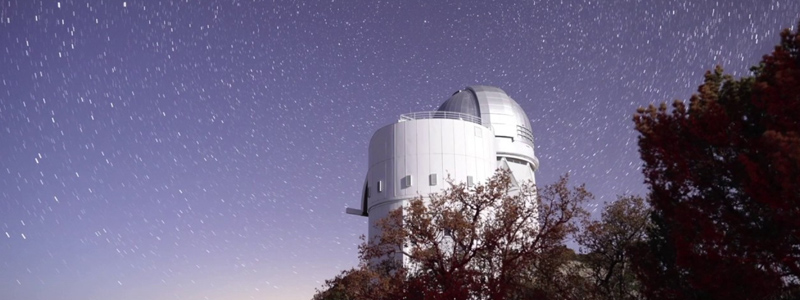Kitt Peak National Observatory
Tucson is known for its crystal clear skies and excellent astronomy facilities. Kitt Peak National Observatory is located 56 miles southwest of Tucson and supports a diverse collection of observatories both nighttime astronomy as well as the daytime study of the sun. In fact, Kitt Peak has the largest collection of optical telescopes in the world with twenty-five optical telescopes and two radio telescopes. Eight astronomical research institutions call Kitt Peak their home.
Visiting Kitt Peak Observatory is a favorite among tourists and locals alike. The visitor center is open from 9:00 AM to 3:45 PM daily with the exception of Thanksgiving, Christmas Day, and New Year’s Day. Daily guided tours are available at 10:00 AM, 11:30 AM and 1:00 PM and group tours can be arranged by appointment.
A $2 donation is requested to gain admission to the observatory visitor’s center while guided tours cost from $2 to $6.50. Guided tours take you to either the world’s largest solar telescope (at 10:00 AM), the 2.1-meter telescope (at 11:30 AM), or the 4 meter Mayall telescope (at 1:00 PM). These tours last about an hour to an hour and a half and are led by trained docents who will share the history and interesting facts about the telescopes and Kitt Peak Observatory.
Mayall Telescope
The 4 meter Mayall telescope is a sight to behold standing at eighteen stories tall. This large telescope can be seen from well over fifty miles away. This telescope was one of the largest optical telescopes in the world. The Mayall is used primarily for faint visible light and infrared observations and has a long and significant history.
WIYN Telescope
Kitt Peak’s newest telescope, the WIYN Telescope was dedicated in October of 1994. This is the second-largest telescope located here however the building surrounding it is much smaller than its predecessors. This reflects the technology that has progressed over the years. Not only is it technologically improved size-wise, but the imagery it produces is also super sharp. This is one of the world’s best imaging telescopes ever. The WIYN Telescope is involved with important research such as understanding the origin of gamma-ray bursts, the evolution of stars in clusters, and viewing supernovae in faraway galaxies.
McMath-Pierce Solar Telescope
You won’t want to miss seeing the McMath-Pierce Solar Telescope, the world’s largest solar instrument. This unique telescope towers 100 feet above with a slanting shaft that angles down 200 feet to the ground. The shaft continues underneath the ground where the sun is then viewed. This instrument is used to study sunspots and sunspot spectra.
Meade Schmidt-Cassegrain Telescope
One of the best ways to experience Kitt Peak is to visit at night and view the heavens through the 16-inch Meade Schmidt-Cassegrain telescope and the 20-inch RC Optical systems. The nightly viewing takes place every night most of the year. During the monsoon season (July 15 to August 31) night time viewing is closed. Up to 36 participants are encouraged to experience astronomy as it should be experienced, at night when the stars are out. You’ll view planets, other galaxies, and more as you’ve never seen them before. Night viewing costs $39 with discounts for seniors, students, and military and due to limited space, reservations are required.
Kitt Peak
Kitt Peak is located 6875 feet above sea level so temperatures are drastically different than on the desert floor. Dress warmly and bring hats and gloves for nighttime viewing. You may even want to bring a blanket at night because much of the evening is spent outdoors or in an unheated observatory. Also, visit the Lowell Observatory located in Flagstaff in Northern Arizona.

Special events, workshops, and classes are also held regularly at Kitt Peak Observatory.
Directions
- Kitt Peak Observatory is about 56 miles southwest of Tucson off State Route 86.
- Take I-10 to I-19 South.
- Within 1 mile is the Ajo Way/Hwy 86 exit (Exit 99).
- Take this exit West.
- Continue past Ryan Airfield and Three Points until reaching Junction 386 (the Kitt Peak turnoff) where you’ll turn left onto 386.
- The Kitt Peak Visitor Center is located 12 miles further at the summit.
